In a vertical dive, a peregrine falcon can accelerate at 0.6 times the free-fall acceleration ? (that is, at 0.6? ) in reaching a speed of about 120 m/s. If a falcon pulls out of a dive into a circular arc at this speed and can sustain a radial acceleration of 0.6?, what is the radius ? of the turn?
In a vertical dive, a peregrine falcon can accelerate at 0.6 times the free-fall acceleration ? (that is, at 0.6? ) in reaching a speed of about 120 m/s. If a falcon pulls out of a dive into a circular arc at this speed and can sustain a radial acceleration of 0.6?, what is the radius ? of the turn?
University Physics Volume 1
18th Edition
ISBN:9781938168277
Author:William Moebs, Samuel J. Ling, Jeff Sanny
Publisher:William Moebs, Samuel J. Ling, Jeff Sanny
Chapter4: Motion In Two And Three Dimensions
Section: Chapter Questions
Problem 96AP: Which has the greater centripetal acceleration, a car with a speed of 15.0 m/s along a circular...
Related questions
Concept explainers
Topic Video
Question
100%
In a vertical dive, a peregrine falcon can accelerate at 0.6 times the free-fall acceleration ? (that is, at 0.6? ) in reaching a speed of about 120 m/s. If a falcon pulls out of a dive into a circular arc at this speed and can sustain a radial acceleration of 0.6?, what is the radius ? of the turn?
Expert Solution
This question has been solved!
Explore an expertly crafted, step-by-step solution for a thorough understanding of key concepts.
This is a popular solution!
Trending now
This is a popular solution!
Step by step
Solved in 3 steps with 2 images

Knowledge Booster
Learn more about
Need a deep-dive on the concept behind this application? Look no further. Learn more about this topic, physics and related others by exploring similar questions and additional content below.Recommended textbooks for you
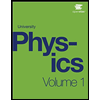
University Physics Volume 1
Physics
ISBN:
9781938168277
Author:
William Moebs, Samuel J. Ling, Jeff Sanny
Publisher:
OpenStax - Rice University
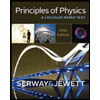
Principles of Physics: A Calculus-Based Text
Physics
ISBN:
9781133104261
Author:
Raymond A. Serway, John W. Jewett
Publisher:
Cengage Learning
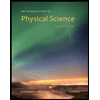
An Introduction to Physical Science
Physics
ISBN:
9781305079137
Author:
James Shipman, Jerry D. Wilson, Charles A. Higgins, Omar Torres
Publisher:
Cengage Learning

University Physics Volume 1
Physics
ISBN:
9781938168277
Author:
William Moebs, Samuel J. Ling, Jeff Sanny
Publisher:
OpenStax - Rice University

Principles of Physics: A Calculus-Based Text
Physics
ISBN:
9781133104261
Author:
Raymond A. Serway, John W. Jewett
Publisher:
Cengage Learning

An Introduction to Physical Science
Physics
ISBN:
9781305079137
Author:
James Shipman, Jerry D. Wilson, Charles A. Higgins, Omar Torres
Publisher:
Cengage Learning
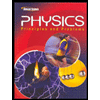
Glencoe Physics: Principles and Problems, Student…
Physics
ISBN:
9780078807213
Author:
Paul W. Zitzewitz
Publisher:
Glencoe/McGraw-Hill
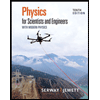
Physics for Scientists and Engineers with Modern …
Physics
ISBN:
9781337553292
Author:
Raymond A. Serway, John W. Jewett
Publisher:
Cengage Learning
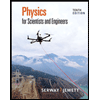
Physics for Scientists and Engineers
Physics
ISBN:
9781337553278
Author:
Raymond A. Serway, John W. Jewett
Publisher:
Cengage Learning